
ABOUT SCOTT FRANKLAND
Scott Frankland is Head of Content at Sengerio. His spirit of inquiry leads him to the world of transportation and mobility to connect with the industry’s leading experts and shine a light on the hot topics.
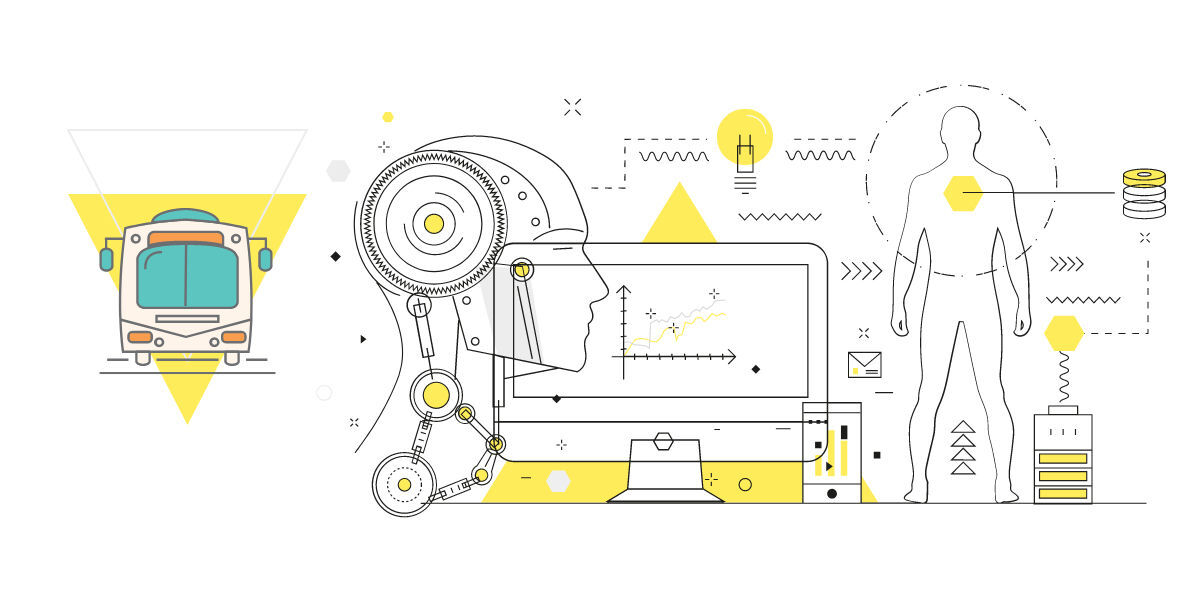
First things first, I have to hold my hands up…
I admit that we’ve spent so much time discussing transport solutions and how to improve a company’s operations, that we’ve completely overlooked a fundamental question:
How do passengers choose and decide which travel company to use amongst all the others?
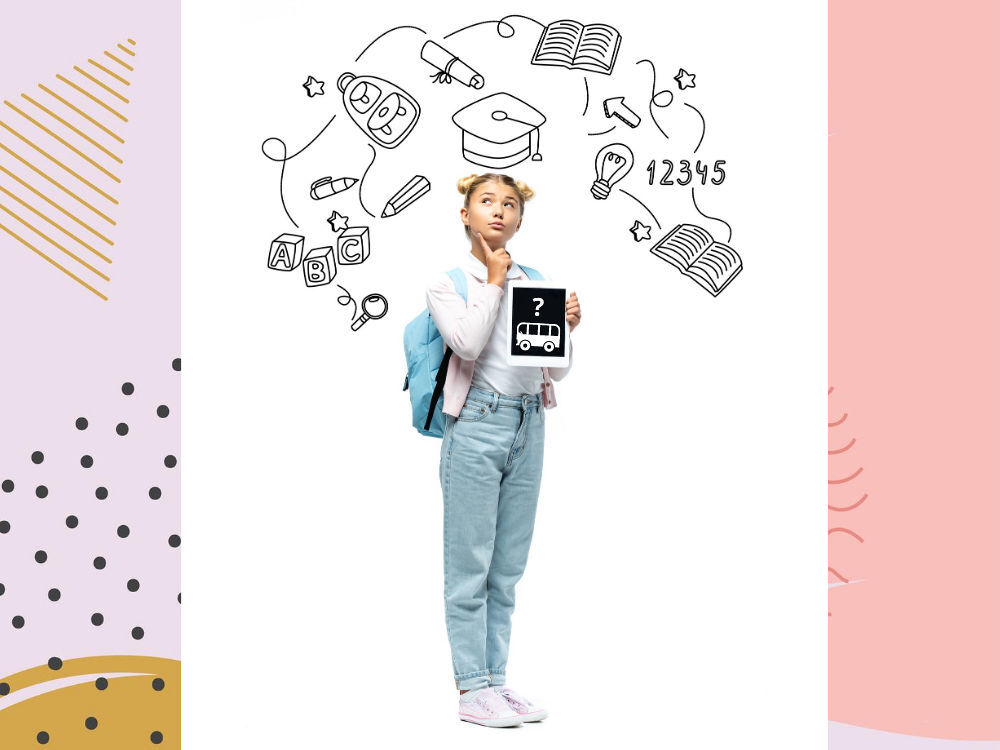
It’s a question every business owner has pondered but has most likely dismissed any logical answer because of the fact there is no ‘secret ingredient’ to influencing people’s decisions.
After all, human beings are free to decide what we can and can’t do, right?
Yes but this isn’t entirely correct…
While it is true that we are free-thinking agents, we are bound to a world that brings along certain limitations.
Let me simplify this by throwing in some examples:
That is, we can exert our freedom to choose whatever it is that we want to do each day.
However, our conceptualized ‘playing-field of freedom’ is predetermined, typically according to the socio-economic and cultural context in which we find ourselves.
This doesn’t denote that our choices are preliminarily made by our environment— like I already said, we are free-thinking agents.
But carefully consider my next point:
Does turning left mean traveling a shorter distance? Or is there more traffic if you turn right?

We might think that our complex neurobiology is capable of evaluating every single possibility of each choice in our lives and, as a matter of fact, many previous economic theories based their frameworks on the assumption that individuals would make optimal decisions.
But the truth is that we are far from the rational thinkers we believe to be.
In fact, in the late 1970s, the field of behavioral economics blasted off and economists began to study human behavior from the perspective of irrationality.
Economists began acknowledging that we make suboptimal decisions because of our limited cognitive capabilities during the decision-making process.
These constraints explain why we generally resort to short-term solutions that are prone to misjudgments and logical errors in our thinking— an approach known in psychology as heuristics.
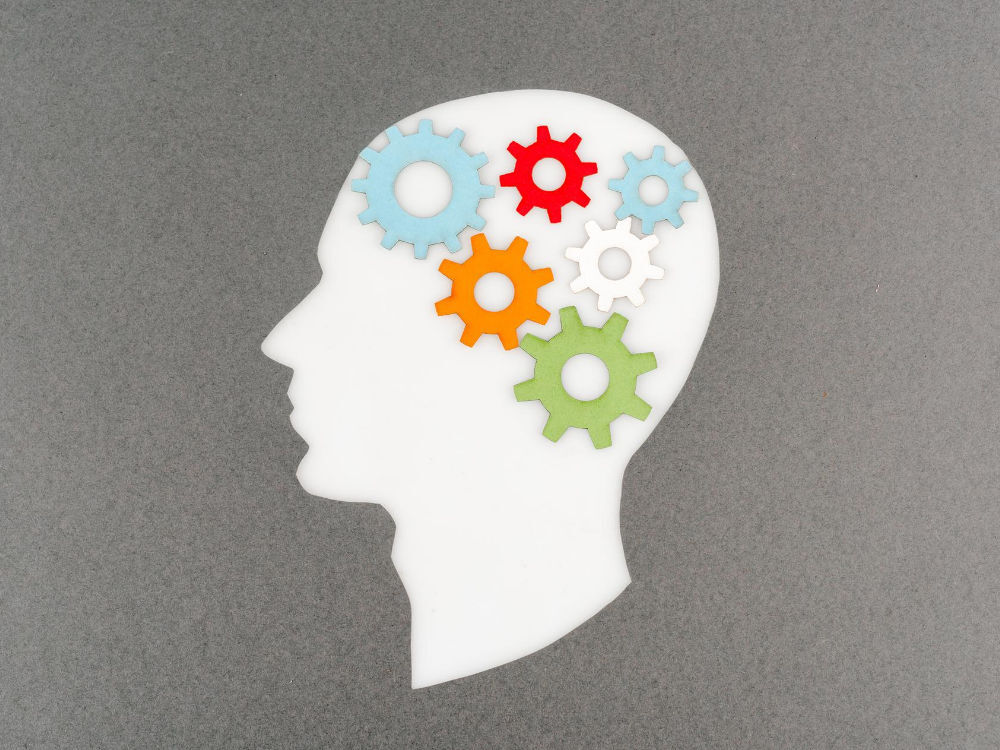
So what have our irrational minds got to do with people choosing your transport company?
Behavioral economics reaches every corner of the business world and these lapses in our rational thinking have attracted marketers’ attention as blood does to a shark.
At the same time, we are witnessing significant advances in neuroscience that are explaining human behavior and decision-making.
Together, our neuroscientific understanding of the human mind in the context of how we behave as economic agents has enabled marketers to get closer to finally understanding why we choose certain products and services rather than others.

This combination is referred to as neuromarketing and in recent years it has been taking the business world by storm.
Let’s look at the ins and outs of neuromarketing and how it is changing the dynamics of transport companies…
To reiterate, neuromarketing is the intersection of neuroscience and marketing.
It employs various tools and methods that measure psychophysical factors of the brain using brain imaging/ scanning techniques to measure our responses to specific products, services, advertising, and other marketing areas.
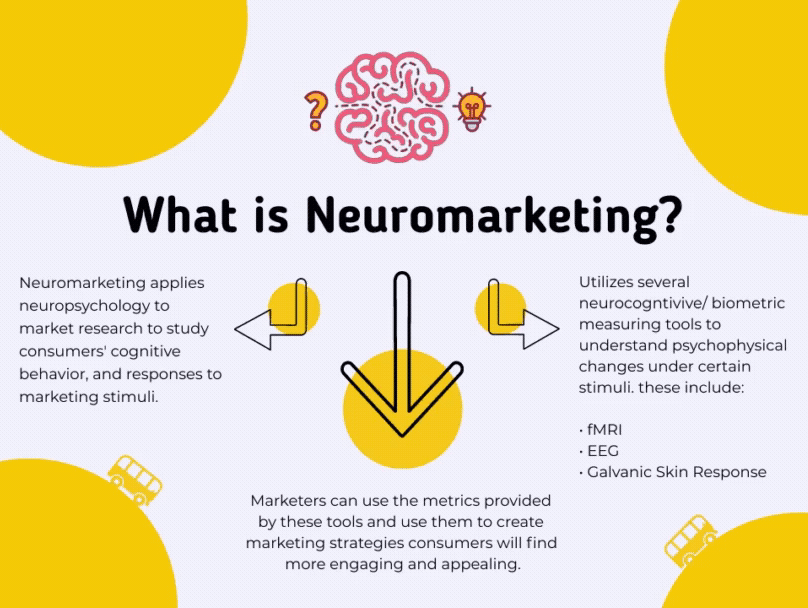
What is especially interesting about this is that we may even measure our subconscious perceptions of marketing stimuli and shine greater light on our behavior where more traditional marketing methods are limited (i.e. Conducting surveys).
From this data, marketers can gain a better insight into their clients’ motivations, preferences, and decisions and, as a result, can tailor their strategies more specifically to businesses’ target audiences by utilizing more creative advertising, product/ service development, and pricing.
To learn more about how neuromarketing is revolutionizing businesses, Sengerio connected with Giuliano Trenti, neuromarketing expert, Tedx Speaker, Founder and CEO of Neurexplore.

Situated in the picturesque northern Italian region of Trento, renown for its vanguard neuroscientific research at the well-established Center for Mind/Brain Sciences (CIMEC), Giuliano and his team at Neurexplore are a leading consultancy agency that unifies cutting-edge neuro-cognitive and behavioral research with marketing strategies to optimize businesses’ strategic decisions when it comes to their economic performances.
Their vision consists of applying the modern scientific understanding of human behavior to businesses’ marketing strategies in order to optimize how they communicate with their potential target audience, product and service development, and client needs analysis. As Giuliano highlights:
As a behavioral economist, I fell in love with researching the advancements in our neurobiological understanding of consumer behavior, and in 2013, I founded our company with a laboratory that utilizes cerebral activity and other forms of psycho-somatic signals to understand human behavior.
Neurexplore analyzes the many areas of a business that are relevant to neuromarketing, such as how a business can present itself to its potential clients and what are the most relevant and useful solutions for the target audiences, and much more.”
Neuromarketing is quickly becoming more essential for today’s successful businesses in a world where marketing strategies are evolving at an aggressive rate.
Given that we are now able to study both the conscious and unconscious levels of decision-making, neuromarketing enables businesses to understand their potential clients better than the clients can understand themselves.
I asked Giuliano how Neurexplore and neuromarketing can transform a transport company’s marketing strategy.
Here are 3 powerful tips where you can apply these tactics to unlock the psychological mechanisms of your future passengers.
As with every marketing strategy and effective customer acquisition process, the key is to identify a target audience’s specific requirements so that the relevant elements can be applied.
More often than not, businesses believe that the most important component of any strategy is pricing.
However, contrary to this popular belief, even though pricing is a critical variable it is not necessarily the most important. As Giuliano explains,
In theory, neuromarketing resolves the traditional problems of marketing. However, one of the most common problems is that businesses aren’t able to fully grasp the underlying needs of a consumer at a subconscious level.
This is where neuromarketing comes in to highlight these underlying psychological mechanisms and reveal greater information about clients’ needs and choices.
Pricing, for example, is often overinflated as being the number-one trigger to influencing people’s choices. Transport companies believe that by having lower prices than their competitors, more people will use their services. But this isn’t always true— there are other, more just as important variables to consider.
Beyond the price, a business must tailor an efficient communication that elicits a positive emotional reaction on the client’s behalf.
Plenty of research has already been done that notes how our behavior is influenced by the effectiveness of color in advertising other relevant marketing mediums.
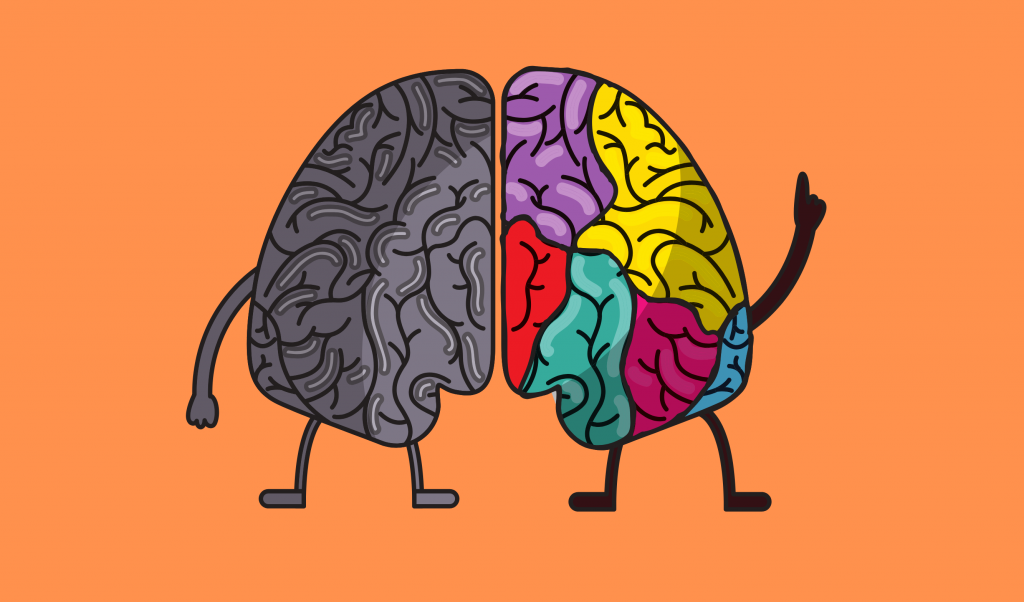
Priming is also another powerful example of an effective communication tactic. Priming is a subconscious reaction to a certain stimulus that influences conscious decisions to other stimuli.
For example, if your transport company works in the domestic travel industry and offers fantastic tours across many historical places of the United States, having a red, white, and blue with the odd stars and stripes design in your advertising banner is surely going to evoke sentiments associated with national pride.
But as a client begins to descend your sales funnel, what other factors are going to propel the client to continue with their experience?
The more a transport company is able to understand the specific requirements of their clients, the more they can create an efficient system where each client has the sensation that your solution is meant solely for them.

Context is important in this case. If, for example, the majority of your clients are professionals wanting to travel for work, they will prioritize punctuality and naturally look for your ability to reassure them that you can provide punctual services.
At Neurexplore we have a dedicated area to study user experience where we observe the typical client process and help businesses optimize this from the start to the endpoint of the product/ service acquisition.
Excuse my cognitive dissonance…
Because now I’m going to tell you how pricing can be a very useful tool!
What every client has in common when they are looking for their transport solution is that they want to get from point A to point B.
This is what we will call their base model.
Just because you can satisfy this requirement doesn’t mean that the decision-making process has to stop there— this base model is customizable.

But at this point, the client probably isn’t entirely sure of the other attributes they want to add to their service.
It is here that behavioral economists have brought it to our irrational attention that the way in which we present these additional attributes ultimately influences the final purchase made.
By putting a client’s base model into a customizable process, we can represent this as a default choice. The more uncertainty a client expresses during this decision-making process, the more likely they will stick with their default choice during their acquisition.
Transport companies can frame different options and attributes for their services to provide a client with the option to either add attributes to their service, reduce them, or a mixture of the two.
When a client adds attributes, the base model is expanded to accommodate more and better characteristics. This ramps up the initial cost of the base model.
In a reductive model, a client deselects the attributes from a preset complete (or ‘fully-loaded’) model that they feel are unnecessary. This lowers the price of the initial model when the client reaches the point of acquisition.
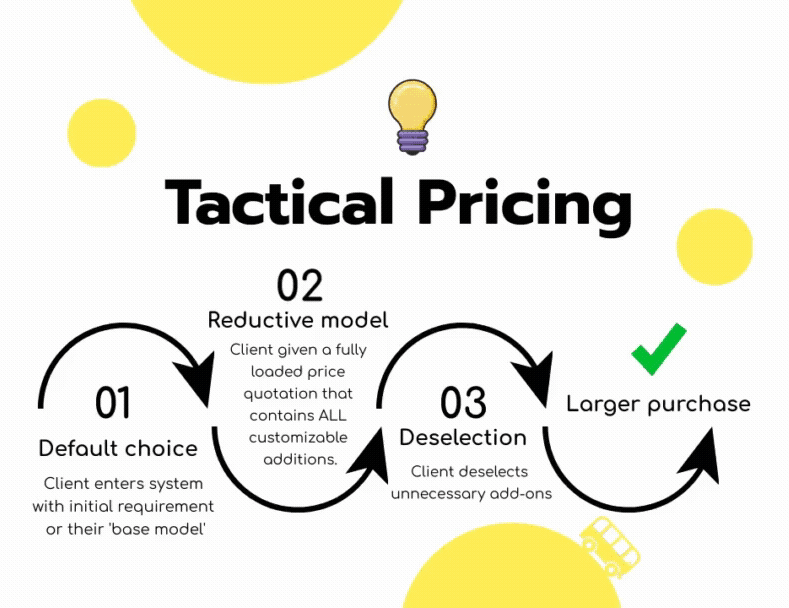
Research has demonstrated that clients choose more additional options in the reductive model because of how they perceive the price before the customizations.
To put this into some context, if a client enters your booking system with a base model (or default choice) of $750 and utilizes the model where they add customizations, the client is more conscious of their initial price of $750 and may be less inclined to acquire more.
On the other hand, if a client enters the booking system and is confronted immediately with a ‘fully-loaded’ plan, they will naturally begin to deselect any unnecessary customizations. However, even if the price is greater than their base model but significantly lower than the fully-loaded plan, the client is more propelled to keep certain customizations.
In the end, the $1000 journey seems much more appealing than the overwhelming $2000 fully-loaded plan to the client. But at the same time, the base model has increased by an extra $250.
From a cognitive perspective, how we think and perceive today is different from how we may perceive tomorrow and 10 years from now.
Social psychologists have been intrigued by this fluctuation in our time perception and have coined a technical term for this variance— Construal level theory (CLT).
CLT states that the longer the period of time between the present and a future event causes our thoughts to become more abstract.
On the contrary, the closer future events are to the present, our thoughts tend to become more concrete.
From a neuromarketing perspective, it is critical to adopt the principles of CLT to ensure that the best information is available to a client so that their processing capacity then forms attitudes and behavioral intentions.
Giuliano let me in on a fantastic technique the transport companies should utilize to really help them increase the number of returning clients and optimize lower-level sales funnel tactics:
With regards to online transport booking platforms, we found something extremely interesting.
We discovered that if a company incentivizes a client with a discount coupon or some other form of bonus for the next time they use their services, the client is much more obliged to consider the incentive of that company before comparing the offers of competing transport companies.
By providing an incentive before the client even considers their next trip, a company is already ahead of its competitors that limit their incentives by offering them directly within the platform itself.

The dynamics of CLT and our perception of temporal distances also influence how we evaluate mathematical information in another technical field referred to as hyperbolic discounting.
Hyperbolic discounting is a psychological bias where people seek instant rewards and satisfaction rather than waiting for a longer period of time (even if waiting means more!).
Neuromarketing incorporates this bias to encourage clients to purchase services based on short-term rewards.
In the travel and transportation market, whether a client wants to travel today, tomorrow, or in 6 months, they use different cognitive mechanisms to evaluate a trip according to the trip’s temporal distance from the present.
Understanding these cognitive mechanisms means that businesses can create strategies with more specific conditions by considering the time between the point of acquisition and the transport service.
At the same time, if a client is looking for a trip as soon as tomorrow, the communicative mechanisms that neuromarketers put in place in order to convince clients to purchase transport services are entirely different.
We have only lightly brushed the fundamentals of the human mind through the lens of the large and exciting field known as behavioral economics.
From our understanding of the principles of how we behave as free-thinking economic agents, neuromarketing realizes every marketer’s dream of combining quantitative metrics with our understanding of human behavior.
It appears overwhelmingly evident that neuromarketing is optimizing every aspect of the client’s experience and process of purchasing a service.
Giuliano and his team at Neurexplore represent the next generation of marketing strategies and they are working continuously to educate and support companies in adopting these neuromarketing practices which can hugely improve their business operations.
As neuroscience rapidly expands and our comprehension of the brain is consolidating, the future of neuromarketing is certainly worth keeping a close eye on especially as our existing marketing solutions are becoming outdated.

ABOUT SCOTT FRANKLAND
Scott Frankland is Head of Content at Sengerio. His spirit of inquiry leads him to the world of transportation and mobility to connect with the industry’s leading experts and shine a light on the hot topics.